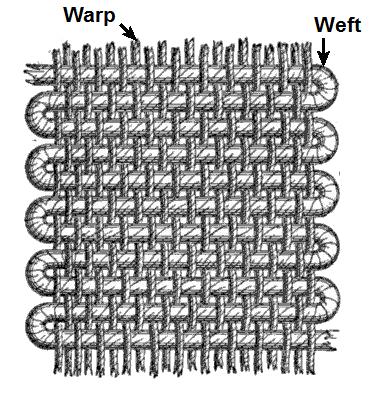
Wrapping our Heads Around Weaves
The way a fabric is created determines the way it looks, the way it hangs, the way it feels. From light and sheer to heavy and shiny, the weave determines the very character of a garment. When it comes to men’s clothing we only have to consider two basic types of weaving, but the variety within those weaves is almost endless.
Plain Weave
Plain weaves are defined by their simple over-under weave. The warp threads (those running vertically) alternate going over and under the weft threads (those running horizontally), just as the weft alternates going over and under the warp.

Poplin
A popular and common weave, poplin gets its name from the Pope having a residence in the town where it was once made. Poplin was originally made with a thicker weft, giving it a corded appearance and texture. Modern poplins use the same size threads for warp and weft, making it smoother but also a bit sheer. Poplin fabrics are usually used for formal dress shirts and tend to have solid colors.
Broadcloth
Broadcloth is made with a normal plain weave like the poplin, but it is woven wider than its intended final width. Traditionally, it was stretched while immersed in water; when it dried, the fabric shrank to its intended size. Finally, the fabric was rubbed with special earth and beaten with wooden hammers to bind the individual fibers together, similar to a felting process. Because of this processing, broadcloth is softer and heavier than poplin, but it can still be used in formal situations.